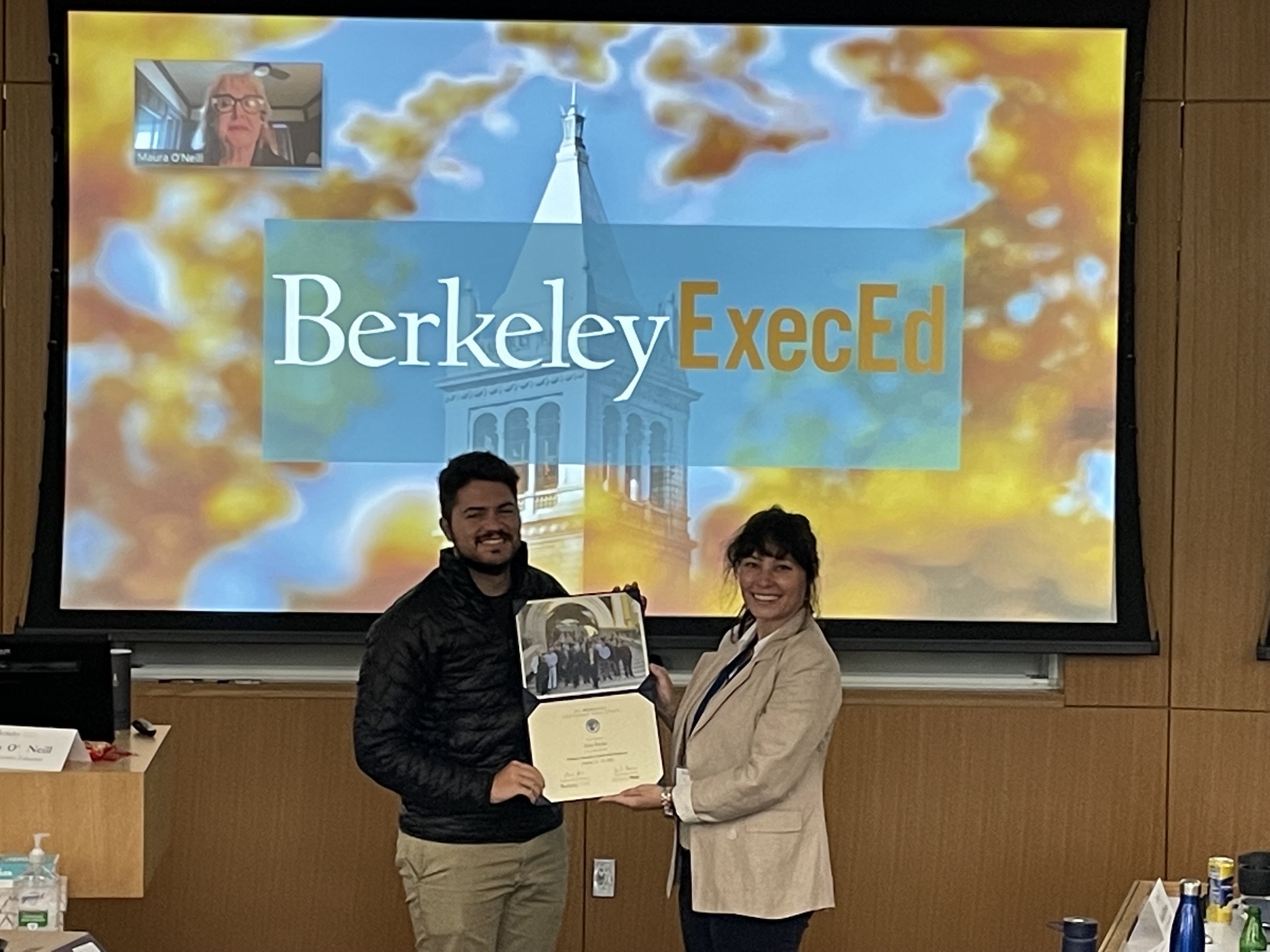What I learned at Berkeley's Executive Leadership Program
• 1,431 views
I've always thought of myself as a good leader. I had the opportunity to lead many teams in different companies, and I consistently tried to do my best to make sure everyone was happy and productive.
One day, I was having a meeting with a former boss of mine, and he told me "you failed as a leader". I still remember that afternoon and how devastated I was. I thought I was doing a good job. But I was wrong.
The first obstacle
I decided to look for a way to improve my skills. So I started reading books, watching videos, and listening to podcasts. I also started looking for a course to help me become a better leader.
I found out about the Berkeley Executive Leadership Program, but there was no way I was going to pay $9,900 for a 5-day program, especially a leadership one. After all, soft skills are all blah blah blah, right? Until I realized that if you're not willing to invest in yourself, why should someone invest in you?
I put some money aside and decided to apply. I had no idea what was going to happen next. One day I got this acceptance letter. I was so excited! I was going to Berkeley!
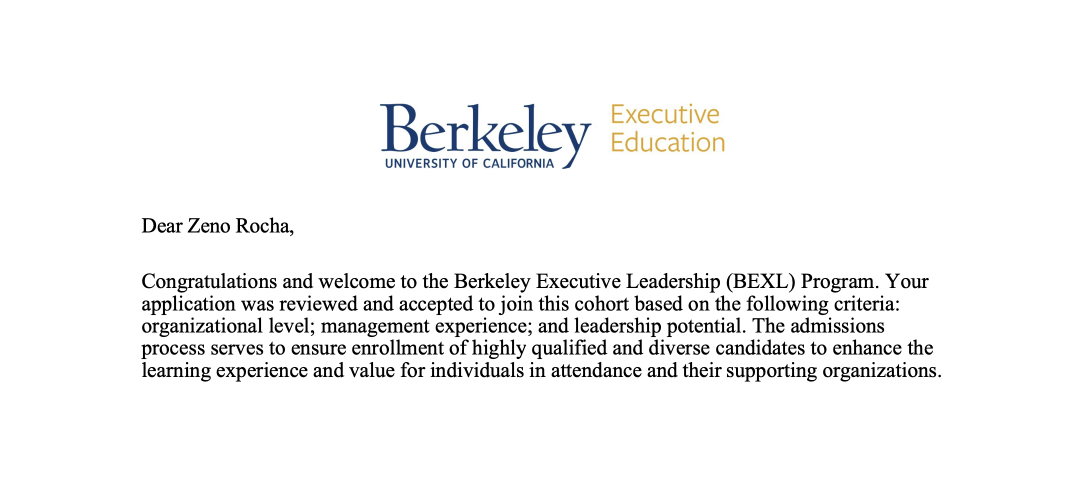
You see, the first obstacle was not getting accepted. The first obstacle was overcoming my own bias. Once we start working full-time, we kind of forget about how important education is. We think that we know everything already and don't have the patience to sit down and listen. But the truth is that what you know is not enough. You need to learn new things, and you need to learn from the best.
The arrival
On October 25th, I finally arrived in Berkeley. The ordinary walk from my hotel to the campus quickly became a special activity by itself. The smell of the trees, the wind on my face, the sound of students passing by, and the beautiful view of the bay made me feel like I was in a movie.
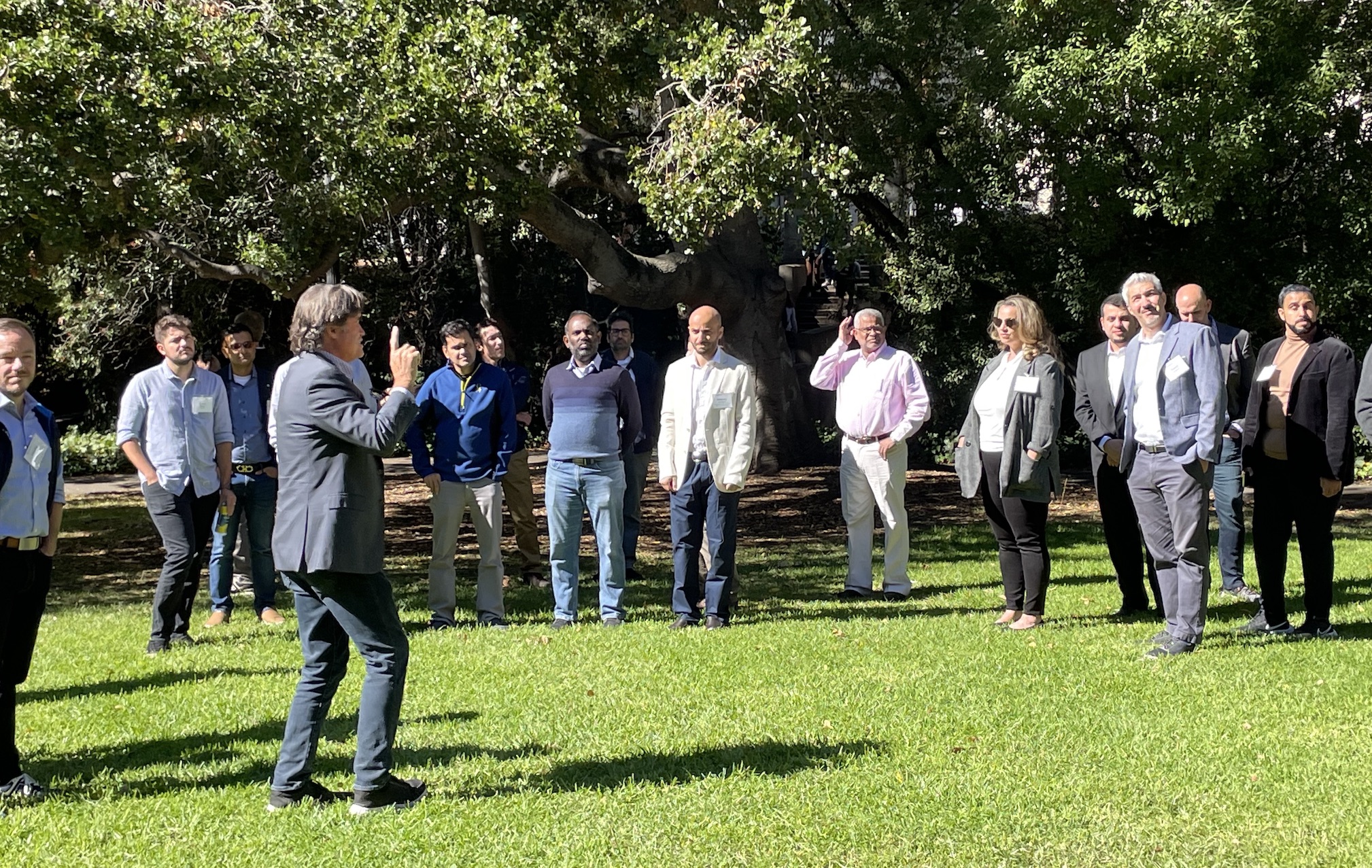
People like Steve Wozniak (Apple), Mitchell Baker (Mozilla), Gordon Moore (Intel), and so many others have walked on the same path I was walking. Projects like the BSD operating system, Vi code editor, and the GIMP graphic editor were all invented there. The freaking Free Speech Movement started there!
The history behind that campus made me feel like I was in a different world.
A dose of self-awareness
Maura O'Neill was the main instructor and trail guide throughout the program. Maura founded four companies in different fields and was appointed by President Obama to be the first Chief Innovation Officer. Right from the start, I realized I was dealing with a unique group of people.
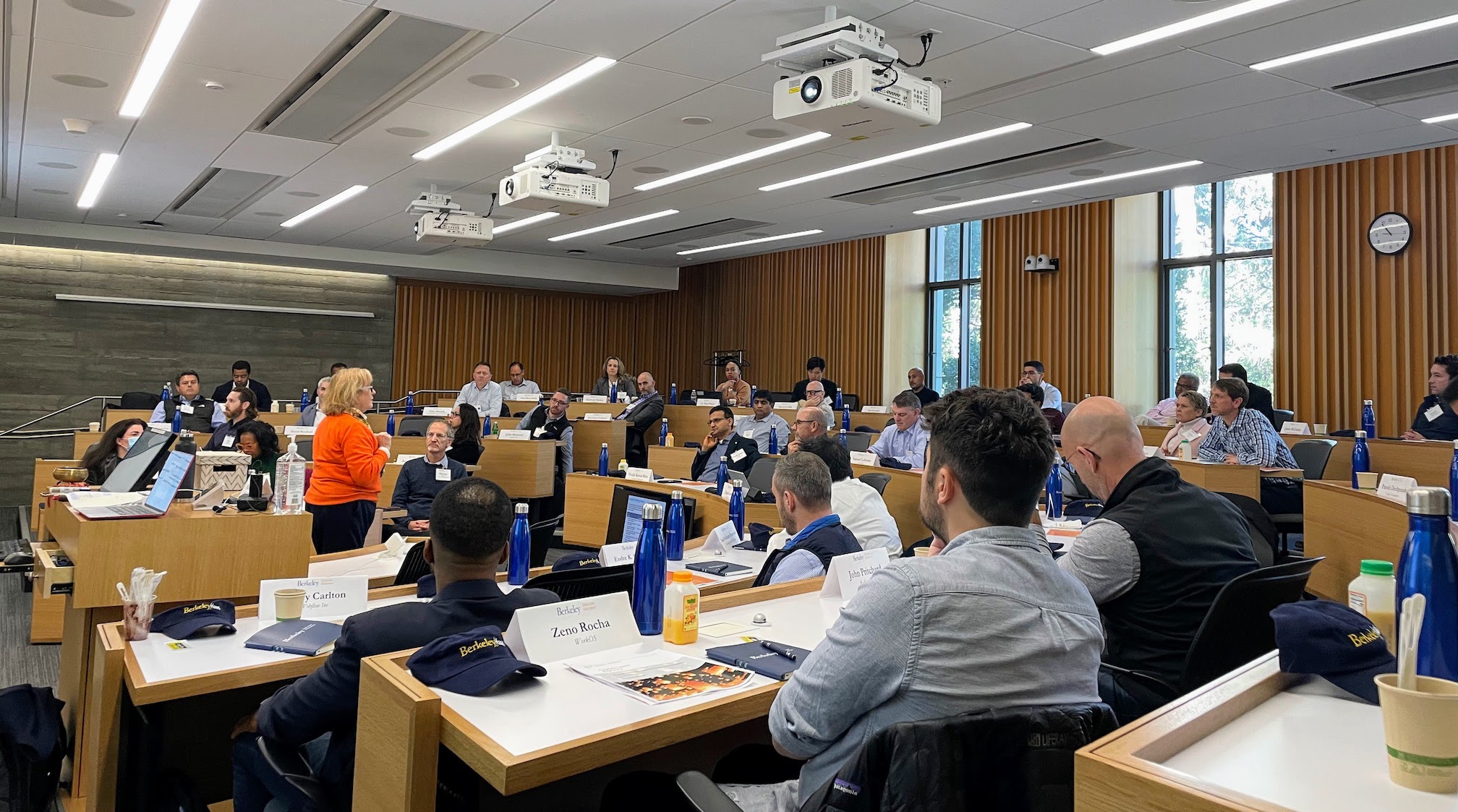
A couple of weeks before the program starts, they ask you to complete a questionnaire about yourself. They also ask you to choose 8-10 other people familiar with your work (present or past) to fill out the same questionnaire.
Maura shared the results with us on the first day. This was a reality check, and I learned a lot about myself as a leader. There were many things I thought I was good at, but I was actually not. And vice-versa. They divided us into different peer groups to discuss and work on the things we all needed to improve.
Having that peer group was terrific because it allowed us to have deep conversations and a safe space to share our experiences. Even though we came from different backgrounds, there were several things that we all struggled with.
Getting the most out of the week
One of our first sessions was with Sara Ellis Conant. She challenged us to think about "what will allow you to get the most benefit from this week?". We were given a 10 point scale of commitment, and we had to rate ourselves. This was harder than it seems. Disconnecting from Slack, from Twitter, from family and friends is not easy. But I knew I had to be all-in if I wanted to get the most out of the week.
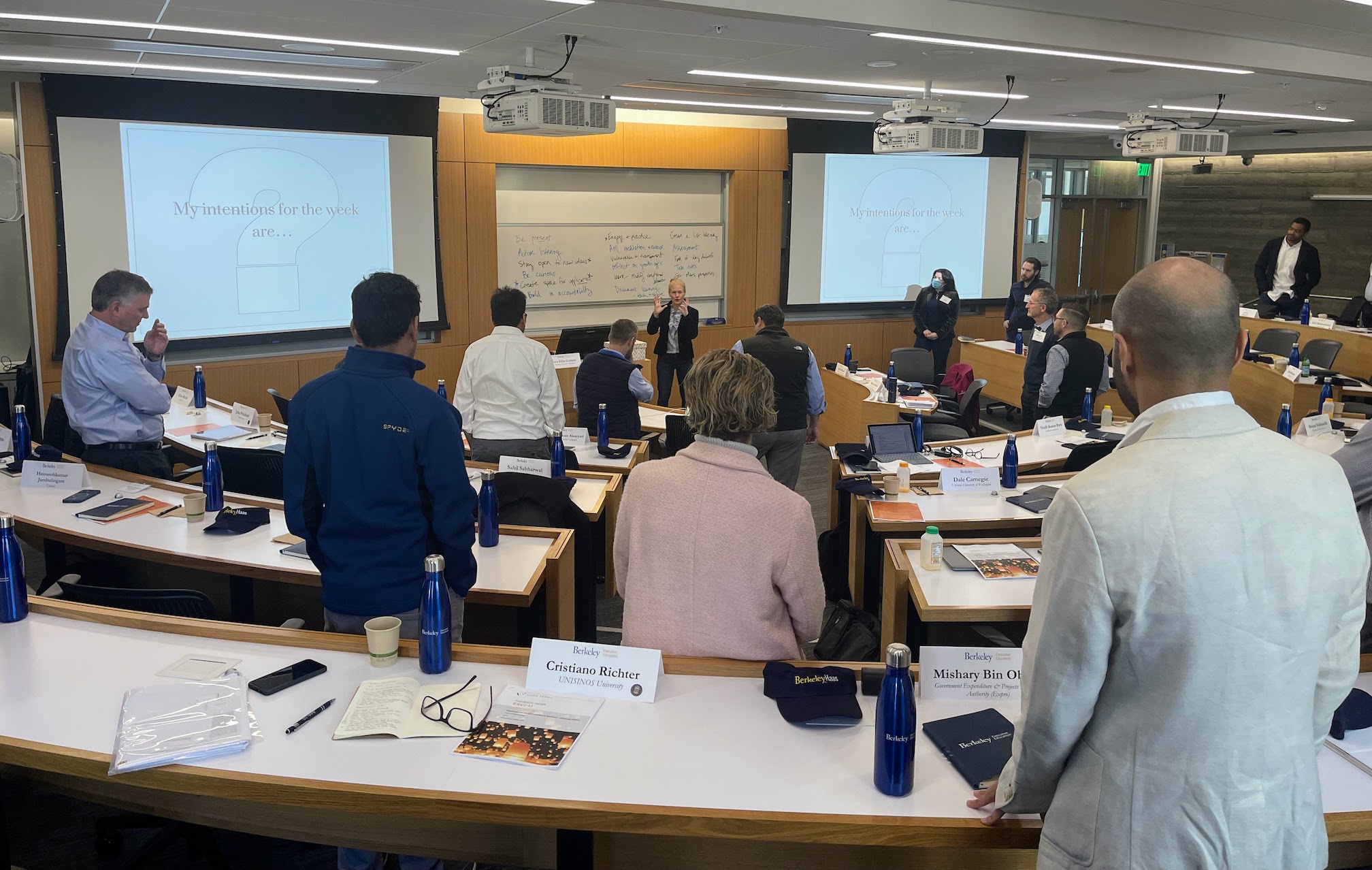
She returned at the end of the week, and we compared our initial goals with our actual behaviors.
This was a fascinating exercise because it made me reflect and be intentional about this whole thing.
Key takeaways:
- Set clear intentions.
- Write down an end-of-day debrief.
- Engage and create space for application.
Leader as a communicator
Later that day, we met Susan Houlihan, a former Senior Manager at Cisco. She talked about the importance of effective communication and the power of authentic leadership.
“Leadership is autobiographical. If I don’t know your life story, I don’t know a thing about you as a leader.” — Noel Tichy
We explored different aspects of communication, such as voice: volume, pitch, tone, speed, emphasis, pause, and silence. And also non-verbal communication: facial expression, hand gestures, eye contact, movement, and posture.
It was curious to see how tweaking just one of these aspects can change the meaning of a message. For example, if you speak too fast, you can sound nervous. If you speak too monotone, you can sound boring. If you speak too loud, you can sound aggressive. If you speak too soft, you can sound weak.
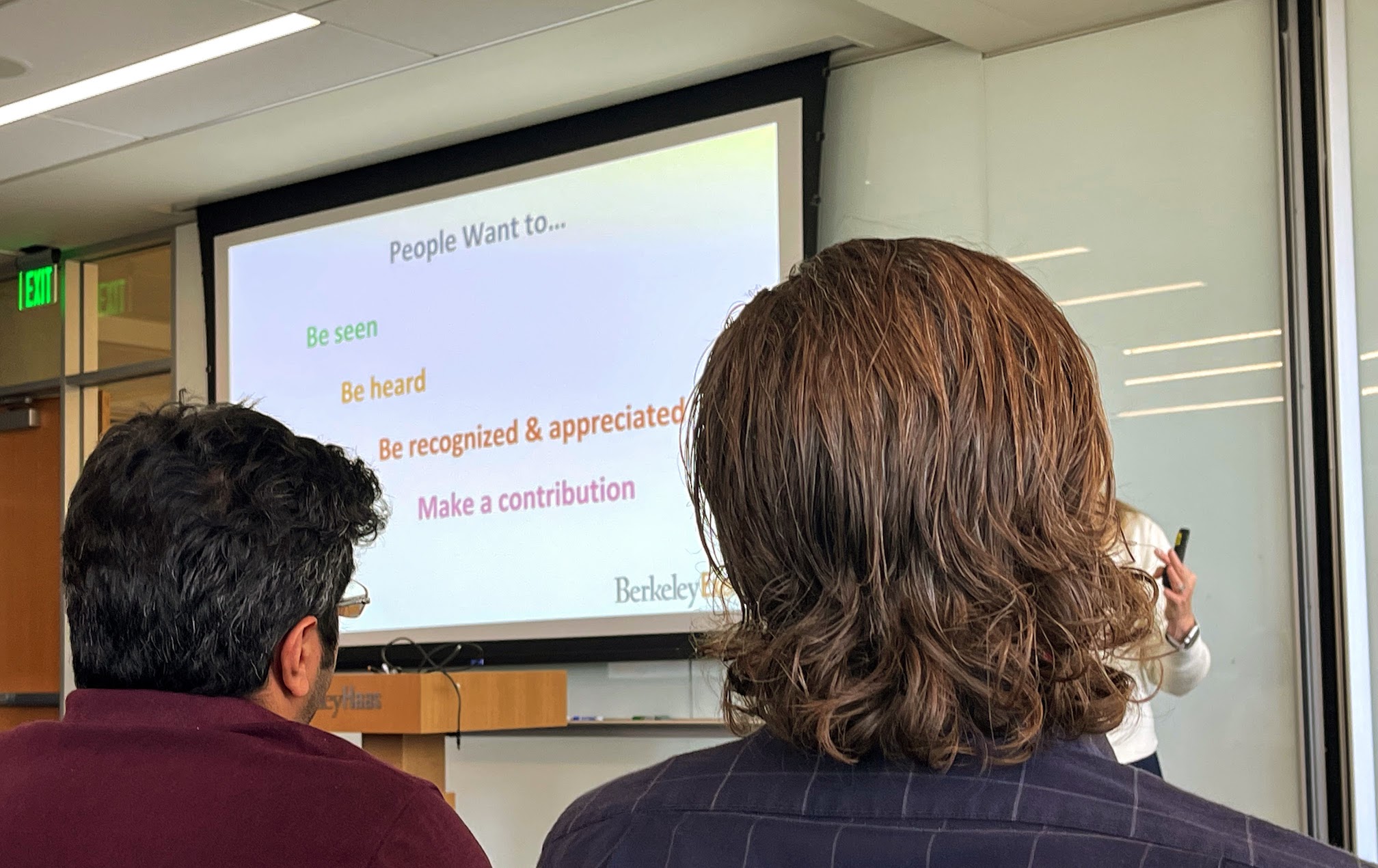
We also learned about this vertical takeoff framework. The idea is that to share an engaging and memorable story, we need to have three components: a catchy beginning, a deep but succinct middle, and close with an impactful ending.
Key takeaways:
- Good stories are deep and brief.
- Be open to the outcome, not attached to the outcome.
- To tell our stories, we must know our stories.
Culture is inevitable… why not leverage it?
On the second day, we had Jennifer Chatman to talk about culture. I'm not gonna lie, I was a little skeptical about this session.
The word “culture” is one that we see and hear all the time in relation to work. Don't get me wrong, I understand the importance of culture, but I was afraid it would to be a lot of buzzwords and not very practical. I couldn't be more wrong.
Jennifer explained that one thing is guaranteed: a culture will form in your team. The question is whether it is one that helps or obstructs your ability to get things done. I learned that culture is a tool. A tool that gives people the autonomy to act. When dealing with conflicting strategies, culture will show the appropriate behavior and path to take.
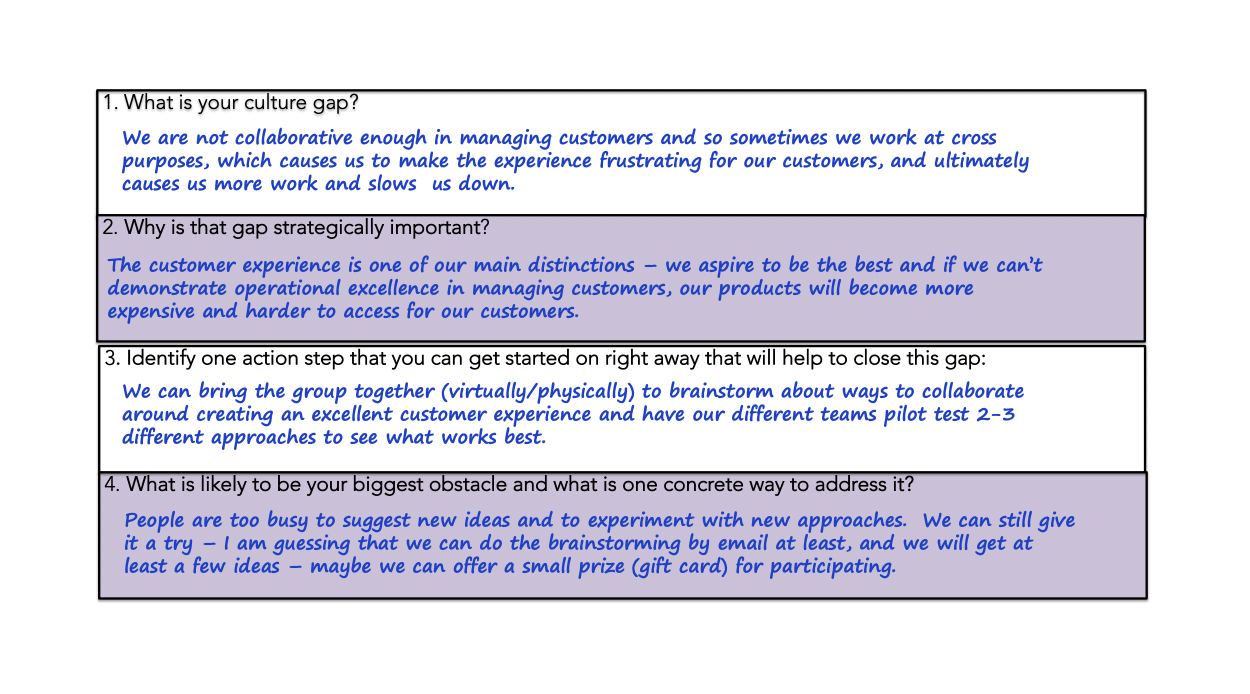
To form, strengthen, or change culture, focus on being consistent, coherent, and comprehensive.
Getting good ideas implemented quickly is more of a culture differentiator than waiting to get everyone to agree on which idea to pursue.
Key takeaways:
- Make sure that successful role models are easy to spot.
- Signaling through visible actions what is important.
- Being consistent and repetitive in signaling.
Storytelling for impact
On the third day, we heard from David Riemer, former Head of Marketing at Yahoo! and author of the Amazon bestseller Get Your Startup Story Straight.
He shared the importance of storytelling and how it can help you communicate your ideas more effectively. He shared a framework for building a narrative from the ground up.
“A story is the only way to activate parts in a brain so that a listener turns the story into their own idea and experience.” — Uri Hasson
More importantly, we discussed the need of story building vs. story telling. Instead of focusing on how to tell a story, we need to spend time thinking on what story best represents the point we're trying to make.
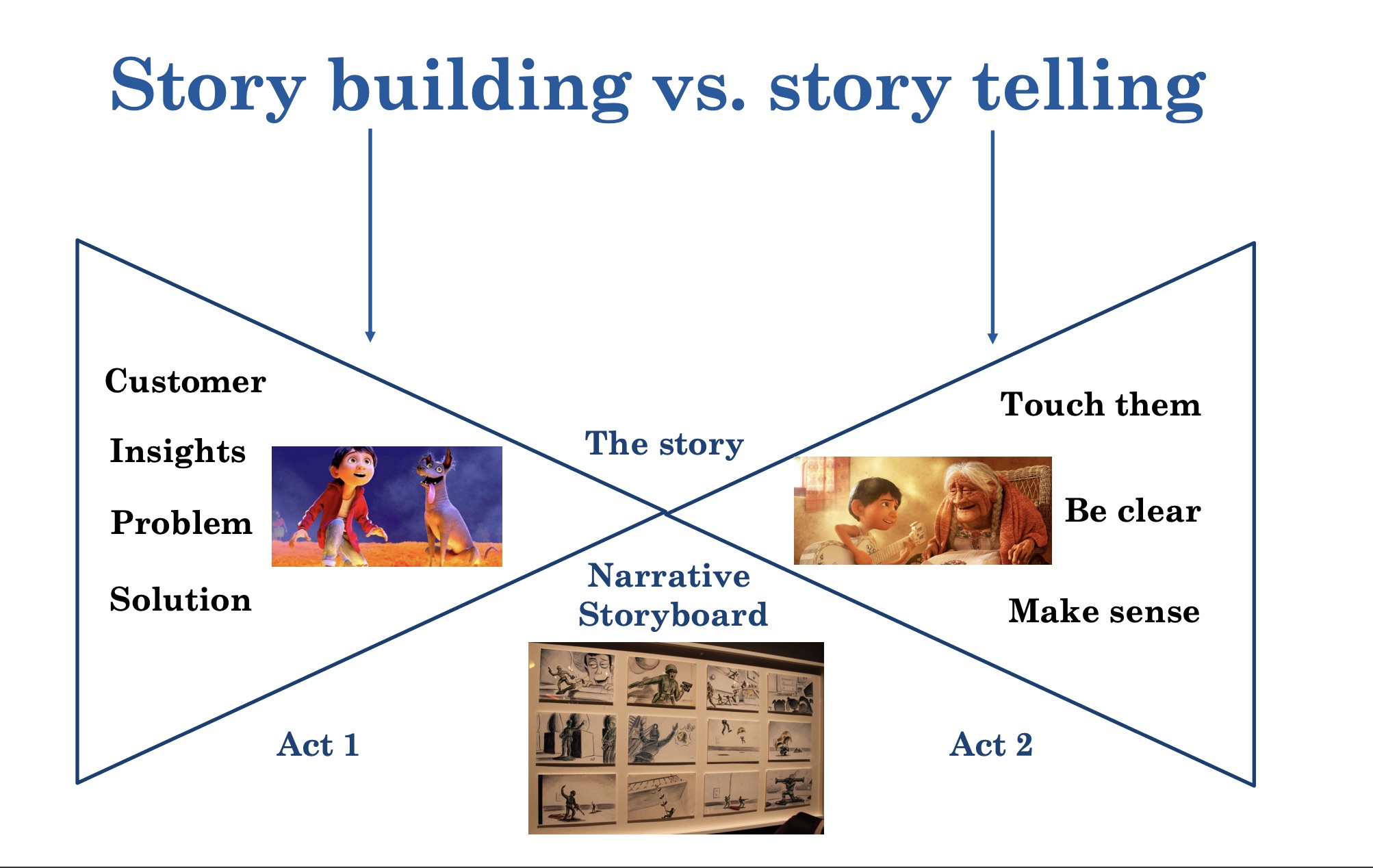
This session resonated a lot with me because it talked about not being afraid of sharing personal and vulnerable stories.
For a long time, I didn't share the single most traumatic experience I had in my life. I was ashamed of talking about the time I spent 3 weeks hospitalized in another country, which led to building Dracula. A few years after that occasion, I sat down, wrote the story, and made it public. This project is now used by more than 4M software engineers worldwide and generated $266,205.07 in revenue. I truly believe its success has much to do with its origin story.
Key takeaways:
- Build a library of stories.
- Don't be afraid of being vulnerable.
- When we hear a story, we imagine ourselves in it.
Persuasion & Influence
On the fourth day, we heard from Juliana Schroeder, Ph.D. in Behavioral Science and Social Psychology.
She talked about the meaning of persuasion, how this term is perceived in a negative way, and what are the fundamental principles of persuasion.
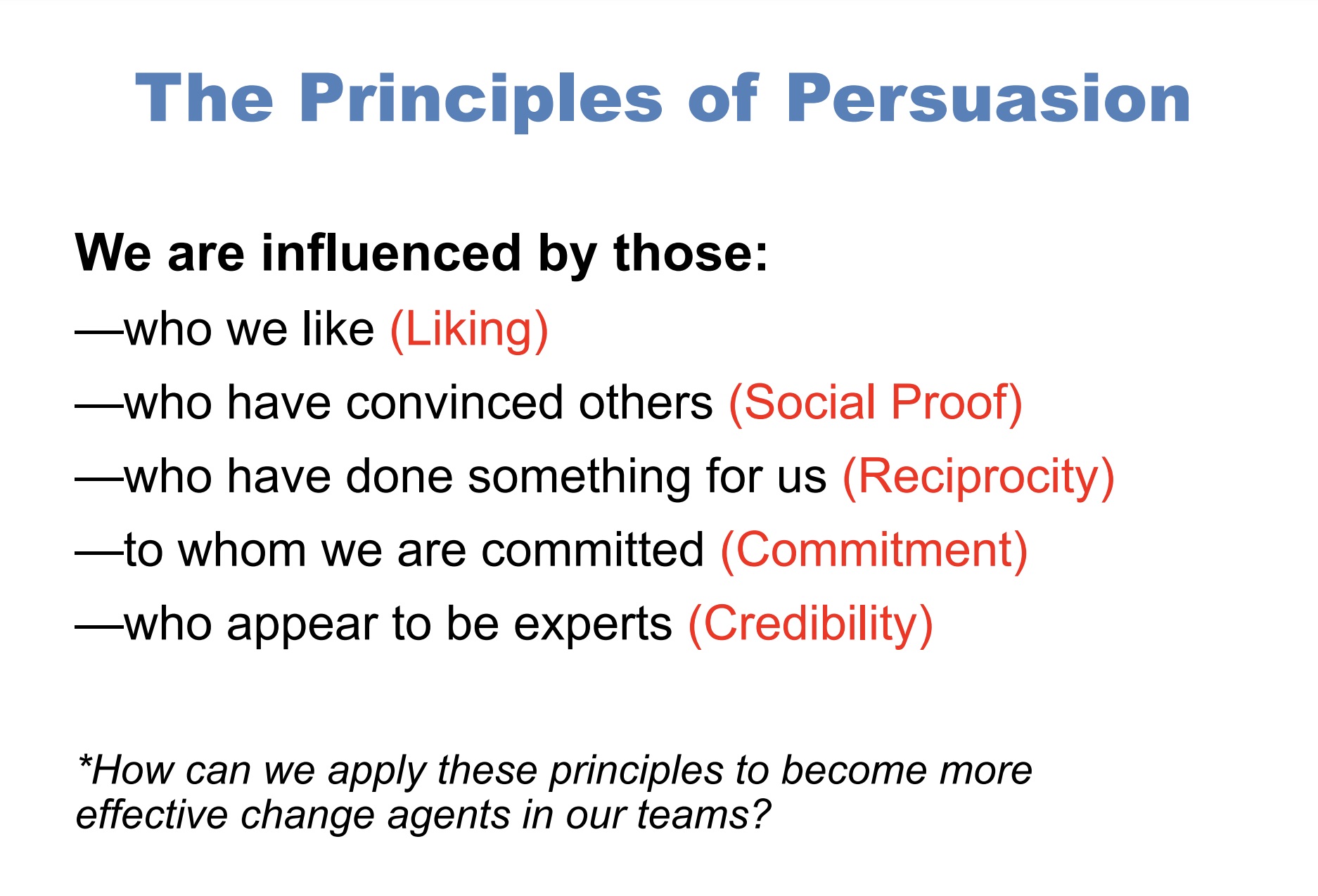
Juliana explained that most attempts at persuasion are ineffective. When you make your case upfront, people naturally counter-argue. Instead of trying to persuade, we should focus on asking questions.
"You cannot force anyone to accept anything you say. You can only help people to persuade themselves." — The Art of Woo
This was an eye-opening session for me. I remember multiple times when I tried to convince someone and failed miserably. I was so focused on making my case, so focused on my own agenda, that I didn't even realize that I wasn't being listened to.
The truth is we tend to overestimate the quality of our own arguments. There's even a psychology term for that: naïve realism. Moving forward, I plan to not only ask more questions but ask better questions.
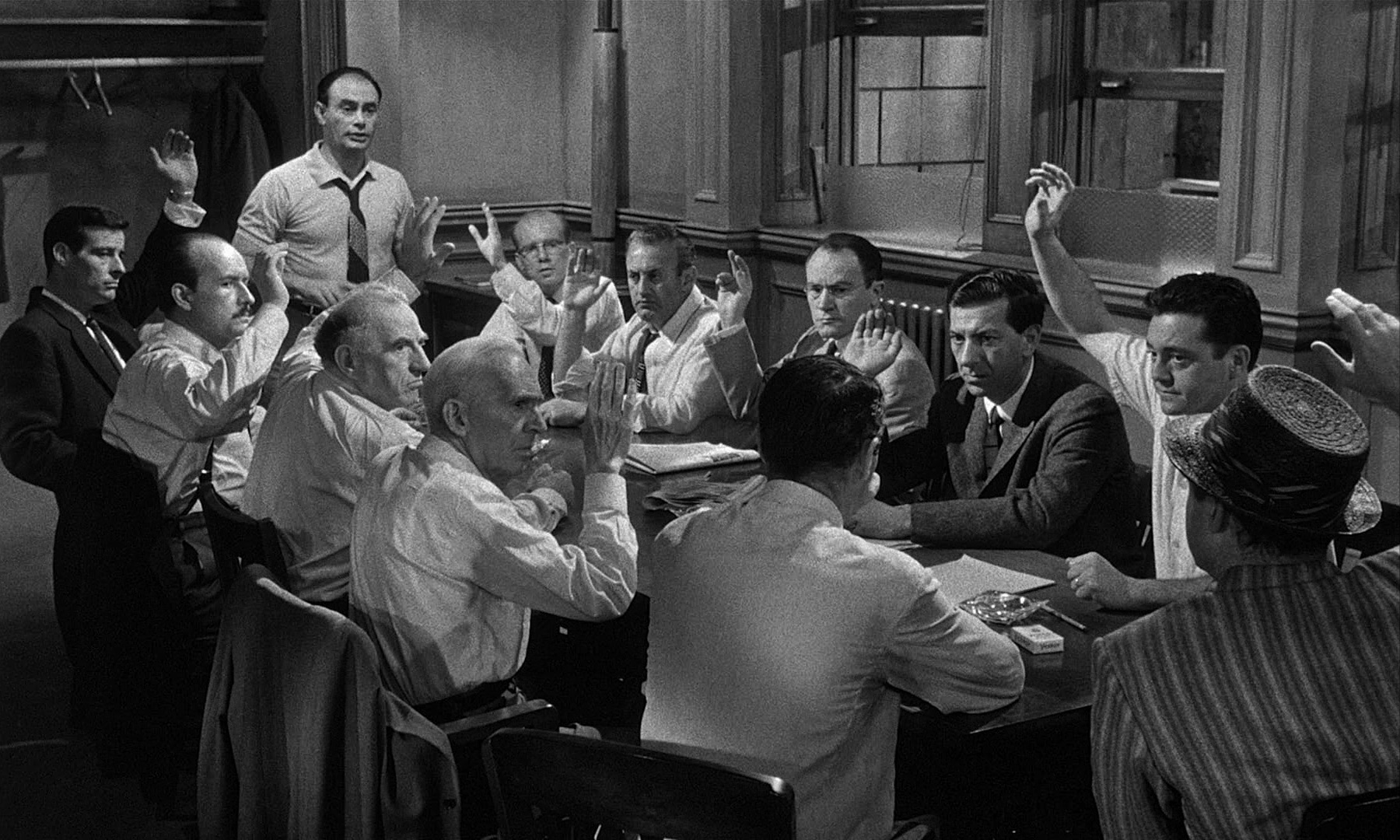
We also watched a few clips from 12 Angry Men. This movie is a masterclass in persuasion, and I can't recommend it enough.
Key takeaways:
- Present less, ask more.
- Find ways to leverage reciprocity.
- Build commitment through self-generation of ideas.
The Science of Optimizing Productivity
On the last day, we met Dr. Sahar Yousef, who has more than 12 years of research on cognitive training.
She explained that the way we work today is fundamentally misaligned with how our brains work. And shared a number of studies on multitasking, context switching, closed vs. open offices, and the distraction caused by our phones.
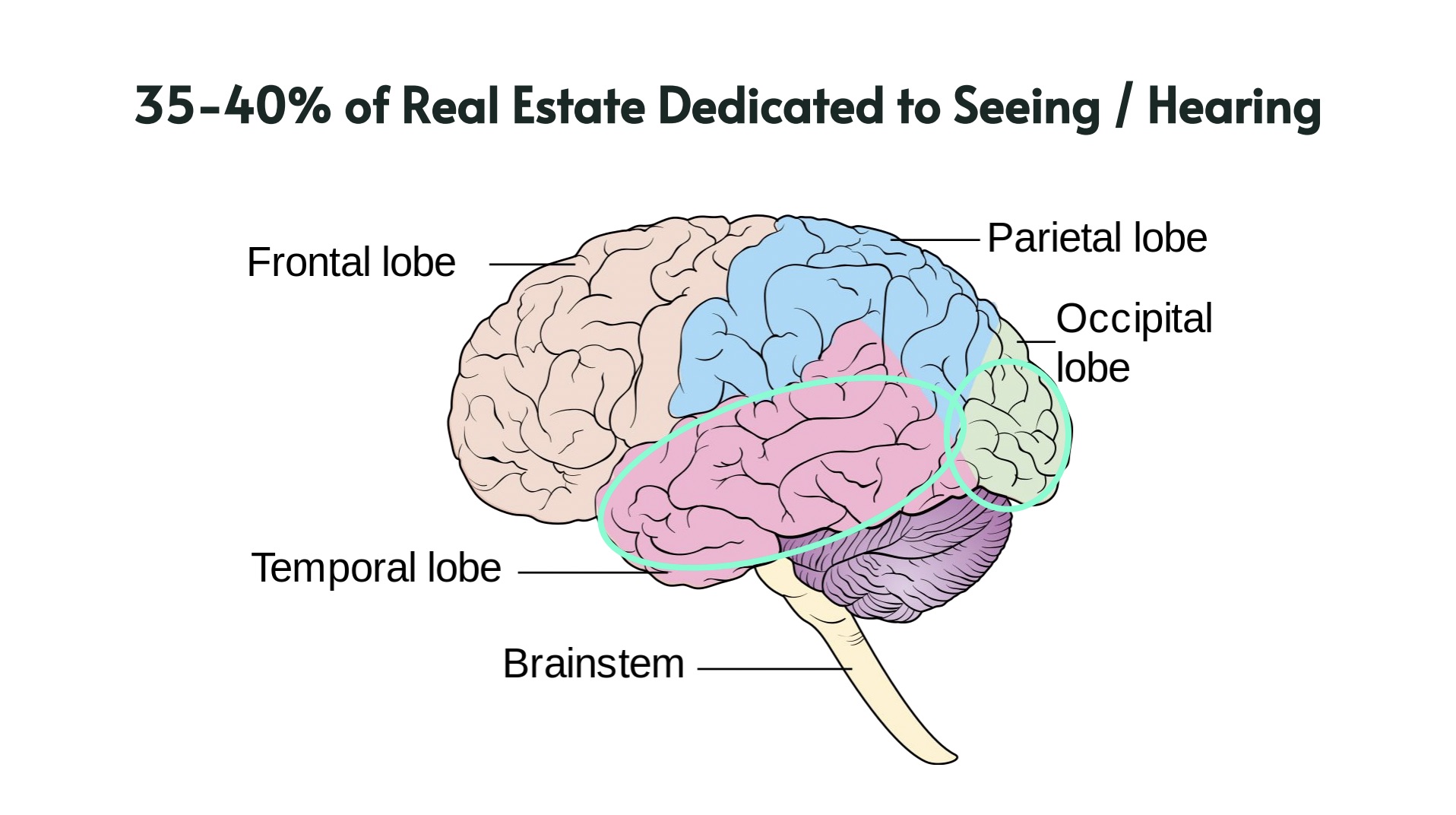
What I loved about her session was it was full of practical tips. We're hard-wired to scan our environments constantly. So when it comes to protecting your sensory systems in an office setting, she recommended creating a visual barrier to avoid seeing foot traffic. When working in a remote environment, she mentioned disabling the "self-view" option on video calls. After all, we don't need to see ourselves to be able to communicate.
I have already incorporated her advice of writing down your most important tasks (MITs) at the start of each day. Before opening my laptop, I get a pen and write a small list of 1-3 MITs on a piece of paper. This helps me be intentional and avoid having my day stolen from me because of other urgent tasks. I also list the least important tasks (LITs) as the day passes.
Key takeaways:
- Hide "self-view" on Zoom.
- Set MITs at the start of each day.
- Protect your sensory systems by doing an audit of your work environment.
The end
Taking these classes was a life-changing experience.
I'm grateful to have had the opportunity to learn from some of the best teachers in the world. I'm also thankful to have met all these fantastic participants.
My goal with this program is not to become a better leader today, but over the next 10-20 years. This was a step in that direction. I'm excited to apply what I learned at work and in life.
